




| Home | Features | Club Nights | Underwater Pics | Feedback | Non-Celebrity Diver | Events | 24 April 2024 |
| Blog | Archive | Medical FAQs | Competitions | Travel Offers | The Crew | Contact Us | MDC | LDC |

|

|
 
 |
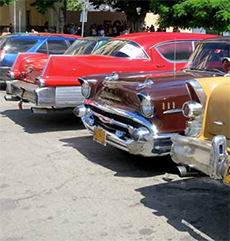 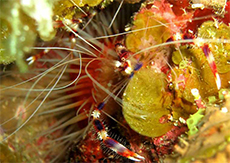 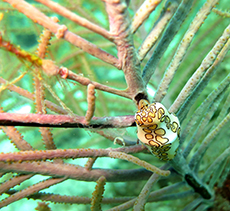 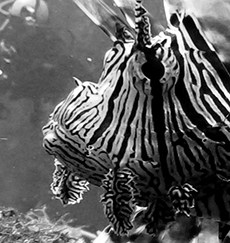 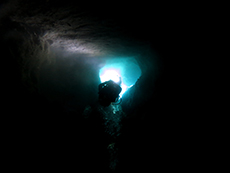 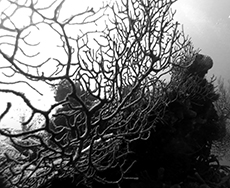 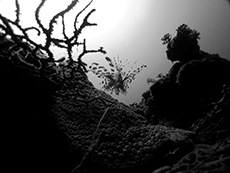 ISSUE 17 ARCHIVE - CUBA LIBREJuliette ClaroSo let’s picture it: white sand, coconut trees, turquoise sea, sunshine and salsa playing loudly on the boat... yes you are in the Caribbean, but not on any island... you are in Cuba, where diving is far from taken for granted. You are in a PADI-free country, a country where diving is an adventure that takes you on an emp- ty road for five hours and where div- ing instructors brief you with a picture of Che Guevara in the kit room.After a long drive through the Cuban countryside, Maria La Gorda (Mary the Fatso) lays at the far end of the island in the Guanacahabibes peninsula in the Piñar del Rio Province on the West side of the island. Maria La Gorda takes its name from the lady (who must have been slightly bigger than a size 0 judging by her nickname) who was abandoned by pirates in the area and decided to set her business there entertaining the pirates stopping by. Since then, Maria La Gorda is a resort for sand, sea and more recently scuba diving. It is important to stress that Maria La Gorda resort is state- owned and the International Diving Center in the resort is the only one operating in this highly protected area of the island. The only three boats at sea are theirs, which is amazing as you really feel that you have the reef to yourself. If you do mind having your dive briefing in front of the picture of the Che, you can always have it on the boat with Salsa music on board. The diving instructors do explorations, Discover Scuba Diving and also courses (mainly CMAS and SSI) but with PADI equivalent of course. (Che and Fidel are now getting the chills). So what can you see there? Well... this depends on the season... Cuba has a sub-tropical climate, therefore expect storms and rain during the summer from May till October. Tropical storms are extraordinary to watch as they can be as short as they can be violent. These create a movement in the plank- ton which is a great opportunity to see fish and predators such as barracudas and huge groupers. In the winter, the weather is drier and a good time to see turtles. Water temperature is 30oC all year around (even at 30m) and visibility from 30m in the summer, but it can drop to 20m in the winter after a storm (that’s what they call bad viz!). Cuba is also a great place to see stingrays, nurse sharks, moray eels, lobsters, and it’s a paradise for macro photogra- phers with pristine waters that are home to fifty different spe- cies of corals (including black coral) and over two hundred different types of sponges. This is an unveiled paradise in the sense that the regulations on the islands are so strict that the reefs are highly protected and unspoilt, perhaps because Fidel Castro is himself an avid diver (or was in his younger days). The fact is that the ecosystem in Cuba provides the best dive sites both for be- ginners and more advanced divers. From caves to drop offs and gorgonian gardens, the island offers a variety for divers who like to see life under water. If you are more of a tech geek or a wrecker, fear not! Despite the lack of nitrox and gas mixes you can still do some lovely deco dives on air and enjoy some of the Spanish Galleons and many other wrecks that litter the sea bed just outside La Habana. There are also plenty of wrecks from the Spanish-American war outside Santiago de Cuba. Those ships have been sunk for more than a hundred years and there are special diving tours to explore them. The best diving lies on La Isla de la Juventud which is an is- land south of Cuba and the reason it is so good is because it is a bit of logistical nightmare to get there. With few boats (well... boats that leave when they want to) and extortionate prices for flights it is no surprise that “The Isla” is so amaz- ing. Avoid the shark feeding at Jardines de la Reina, it is a pure waste of time and if you don’t want to snap at some stupid Italian riding a shark or a turtle, best not go there and simply enjoy the purity of the West and the South coast. Most of all, Cuba will move you by its incredible strength and will-power to survive a sixty year US embargo and the ups and downs of a Marxist-Leninist government. Enjoy the mu- sic, the sun, and most of all the charms of the Cubans who will do their best to make you enjoy your stay on their island. The food is... awful, but the mojitos are awesome! Chillax and switch to the Caribbean way of life. If you want to help you can always give some of your equip- ment away at the end of your stay as it is difficult to import diving equipment on the island. You will soon realise that we have it easy and a torch, a rash vest, a pair of fins are easily replaced in Europe... not that easy in Cuba. Cuba in a nutshell: Flights London – Havana via Madrid with Iberia from £649 Currencies (Yes There are 2!) Moneda Nacional (for locals) and Cuban Convertible Pesos (for foreigners)($) £1= $1.57 Best dive sites: Maria la Gorda (west) La Isla de la Juventud Santiago de Cuba (wrecks) Cayo Largo (south) Playa Giron and the Bay of Pigs What To bring: 3mm full wetsuit, BCD / regs (international or bring a din adaptor), mask, snorkel and fins, torch (thin on the ground in Cuba), camera (wide angle and macro) Previous article « Technical Diving and Rebreathers Next article » Diary of a Diving Novice, Part Deux Back to Issue 17 Index |